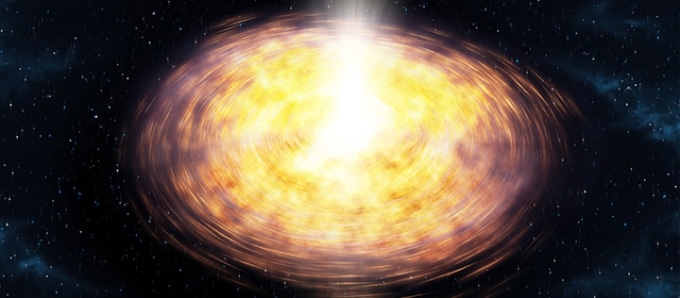Nov 3 2017
An international team of researchers from multiple institutions, including INRS, is shedding light on the mystery of matter accretion in young stars. Published in the November 1, 2017 Science Advances online journal, their discovery helps explain how matter accumulates on the surface of a young star and reconciles the theory behind and observations on the accretion process—a matter of debate among astrophysicists because of the limited number of theoretical models and actual observations.
 Credit: INRS
Credit: INRS
An experiment replicating the accretion phenomenon on a star was conducted in a laboratory. Researchers took a close look at what happens when a laser-produced column of plasma impacts a solid obstacle in the presence of an intense magnetic field. X-ray emissions measurements verified the presence of an envelope of plasma around the core of the accretion zone of the matter on the star’s surface. Discovery of the envelope allows researchers to accurately calculate the matter accretion rate.
The importance of this discovery lies in the fact that a star is born, grows, reaches adult size, and then dies either by exploding or by collapsing in on itself to have much less volume but much greater density. Stars have a lifespan like any living thing. The adult phase—like our sun is in—lasts for many billions of years. Outside the birth of a planet (like Earth) or the appearance of life, it is a relatively quiet time in the life of a star.
Physicists are more interested in the birth and death of stars—these are defining moments. By looking at the emission of x-rays from the surface, scientists can also determine the rate at which stars grow under the influence of gravity as they pull in the interstellar matter surrounding them. To accurately interpret these x-rays, scientists must ensure they are not being obscured by something—hence the importance of the discovery of an envelope.
This video demonstrates a column of interstellar matter falling onto a star being formed, through the star’s surrounding matter. The dark blue on the left is the density of the matter and the red on the right is the temperature. The column of matter (yellow for density and light blue for temperature) comes from the top of the screen and collides with the star’s surface (at the bottom of the screen). The time-lapse video shows the gradual formation of an envelope arounds the accretion zone (point of impact of the interstellar matter on the star's surface). The envelope is denser and colder than the matter that naturally surrounds the star, concealing some of the x-rays emitted from the accretion zone. Knowing that this envelope exists, scientists can measure the x-rays to accurately calculate the rate of accretion of matter on the star’s surface.